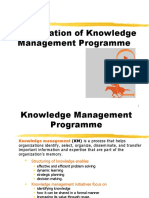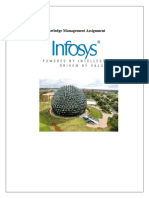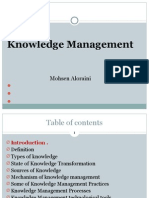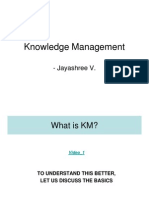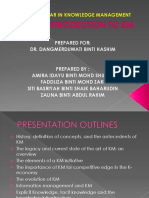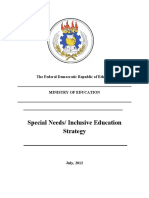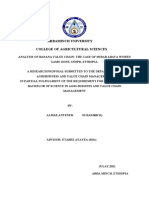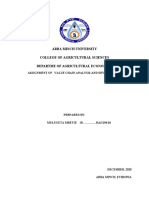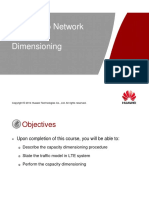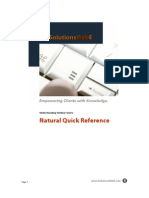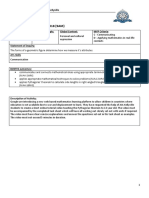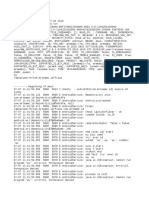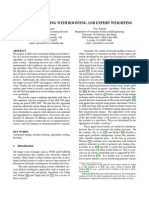0% found this document useful (0 votes)
73 views7 pagesDefinition of Knowledge Management
Knowledge management is the systematic process of creating, capturing, sharing, and leveraging an organization's knowledge. It involves managing both explicit knowledge, such as documents and reports, and tacit knowledge, which resides within people. Effective knowledge management ensures the right knowledge is available to the right individuals at the right time so they can perform their work efficiently. The goal is to improve organizational learning, innovation, and performance through better use and reuse of knowledge.
Uploaded by
oliyaad HabtaamuuCopyright
© © All Rights Reserved
We take content rights seriously. If you suspect this is your content, claim it here.
Available Formats
Download as DOCX, PDF, TXT or read online on Scribd
0% found this document useful (0 votes)
73 views7 pagesDefinition of Knowledge Management
Knowledge management is the systematic process of creating, capturing, sharing, and leveraging an organization's knowledge. It involves managing both explicit knowledge, such as documents and reports, and tacit knowledge, which resides within people. Effective knowledge management ensures the right knowledge is available to the right individuals at the right time so they can perform their work efficiently. The goal is to improve organizational learning, innovation, and performance through better use and reuse of knowledge.
Uploaded by
oliyaad HabtaamuuCopyright
© © All Rights Reserved
We take content rights seriously. If you suspect this is your content, claim it here.
Available Formats
Download as DOCX, PDF, TXT or read online on Scribd
/ 7
















